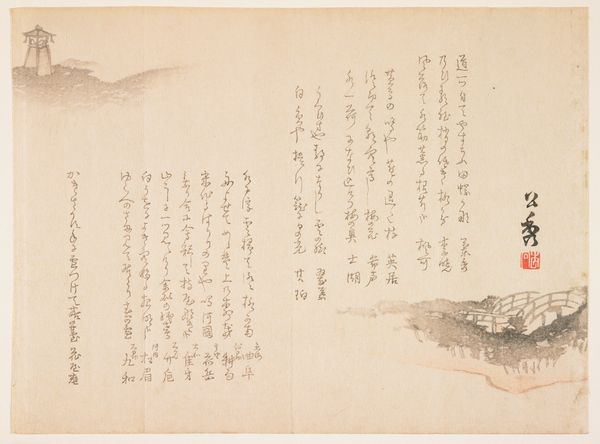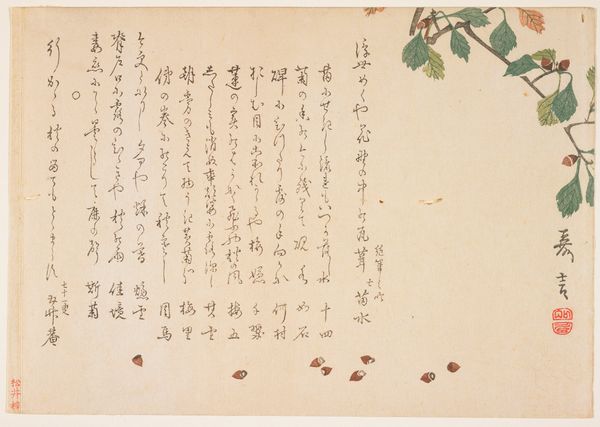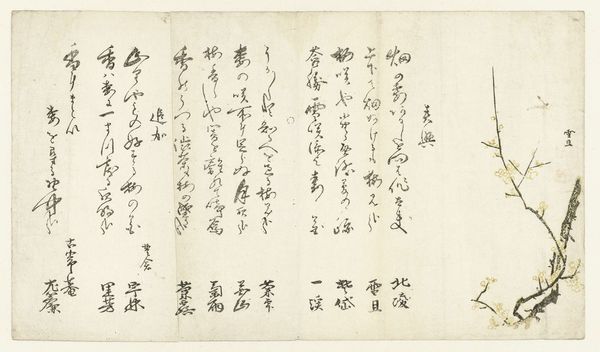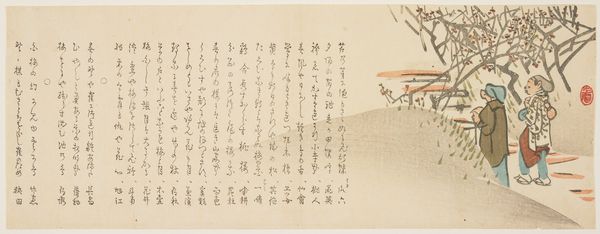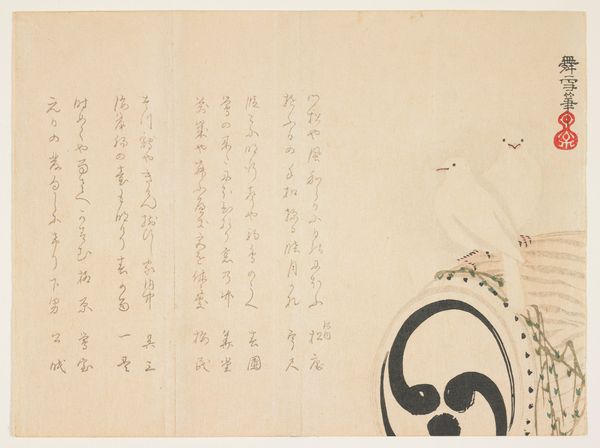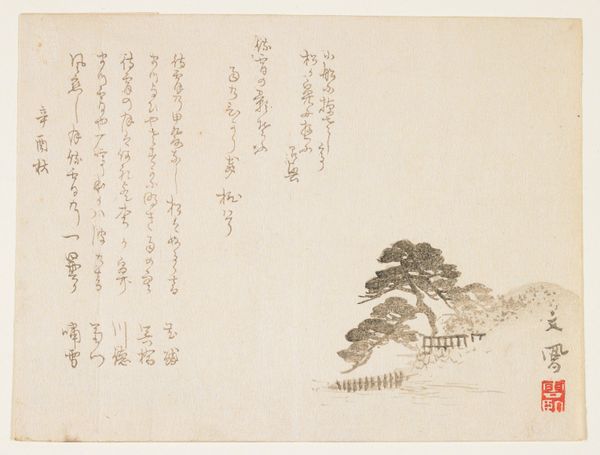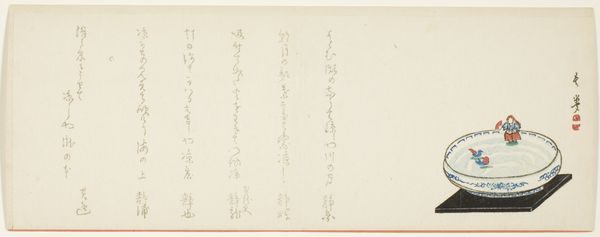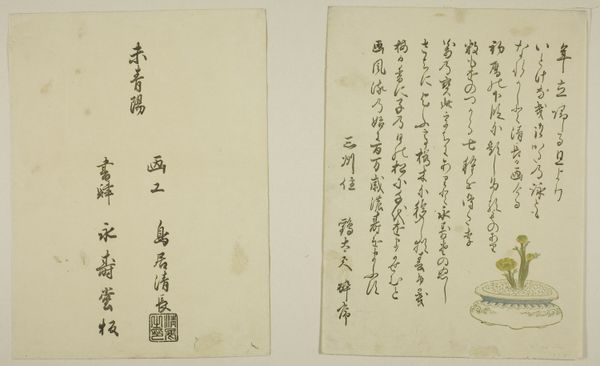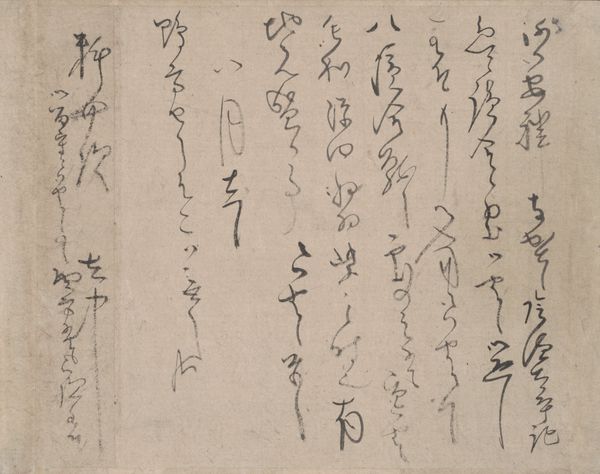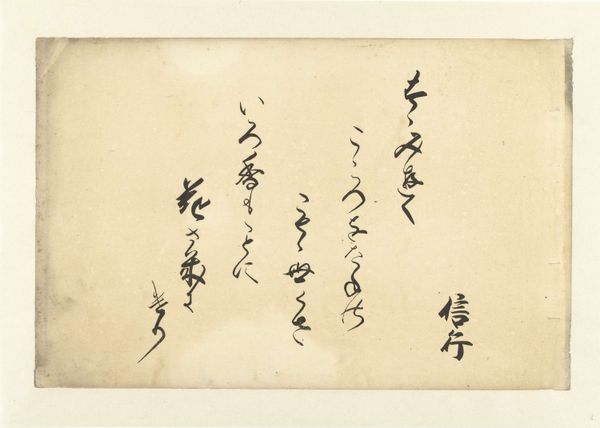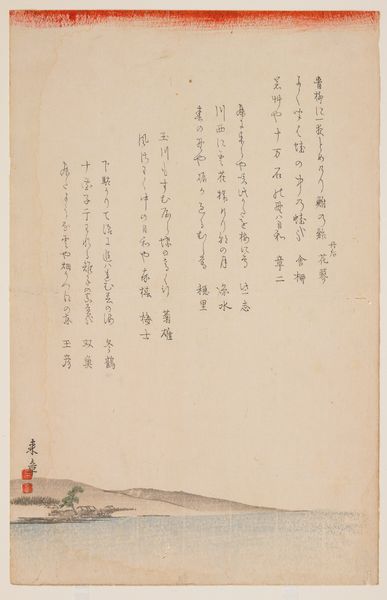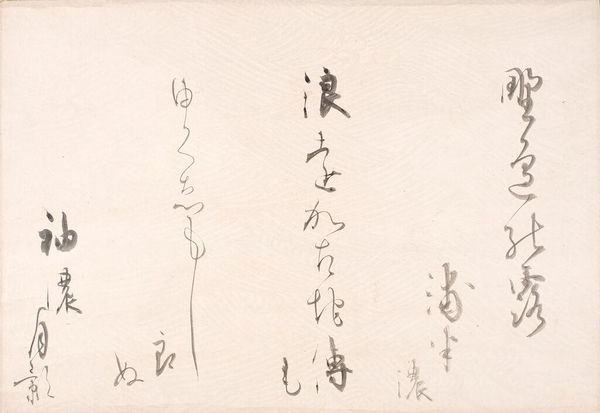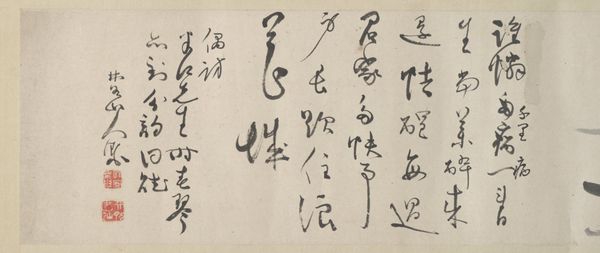
Dimensions: 7 1/16 x 19 1/2 in. (17.9 x 49.5 cm) (image, sheet)
Copyright: Public Domain
Editor: So, this is "Monkey and Trainer," dating back to 1884. It's a mixed media piece on paper and currently resides in the Minneapolis Institute of Art. It has an ethereal quality. What historical insights can you glean from this image? Curator: The prominence of ukiyo-e style in the late 19th century speaks volumes. During the Meiji era, Japan experienced significant Western influence and rapid modernization. Notice how this print, while traditional in some ways, begins to negotiate its place in a rapidly changing world, perhaps even for a tourist audience. The monkey, often associated with cleverness and imitation, combined with the presence of a trainer hints at social hierarchy. How do you think the intended audience at the time might have received the depiction of a monkey performing tricks? Editor: I suppose it might have been seen as commentary on class structure or even cultural exchange, if intended for a Western audience? A sign of Japanese identity in the face of Western cultural imposition? Curator: Precisely. Consider also the location and the presence of calligraphy alongside the image. It suggests an attempt to merge textual and visual narratives. Ukiyo-e prints often circulated widely, serving as a form of popular entertainment and news dissemination. The act of training a monkey could symbolize control and manipulation. Is this print a purely objective representation or a subtle critique of social power structures? Editor: It’s making me reconsider the simple narrative I initially perceived. The combination of social commentary, cultural negotiation, and artistic traditions makes this piece more nuanced than I initially thought. Curator: Indeed. It reminds us that art doesn't exist in a vacuum, and every element—style, subject, and context—contributes to a broader dialogue. The popularity and spread of similar art played a pivotal role in defining and negotiating Japan's identity on the global stage. Editor: This was an enlightening perspective on art and historical context. I will keep this in mind for further works I see.
Comments
minneapolisinstituteofart almost 2 years ago
⋮
The Japanese have long considered monkeys to be auspicious creatures. Warriors often had monkeys paraded through their stables, believing that they were effective in protecting their horses from sickness. During the Edo period (1615-1868) trained monkeys were taken door-to-door at New Years, performing tricks and bestowing ceremonious blessings in exchange for a small monetary reward. In this print, a monkey rides on the back of his trainer as the pair make their way to the next house. Japan's sacred Mount Fuji rises in the background and a kite flies overhead, both auspicious symbols.
Join the conversation
Join millions of artists and users on Artera today and experience the ultimate creative platform.
